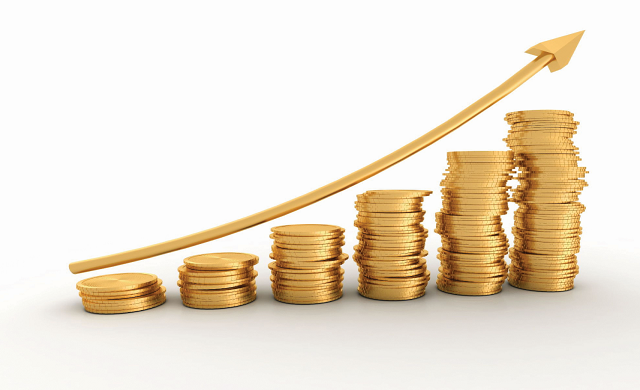I’ve been slapdash in my thinking. I know….you’ve probably thought that about much of my writing, but the particular issue I want to focus on today is on the way in which I’ve measured return on invested shareholders’ capital.

This is a crucially important measure: the amount generated in profit for shareholders as a percentage of the amount of shareholders’ money being used by the managers.
If a very high percentage return is being earned each year, and is likely to continue, then the share will, in all likelihood, perform well (assuming it is not excessively priced today).
I realised I had never really got to grips with thinking through the best measure of return on shareholder capital invested in the firm when I read an article written by Richard Beddard on a company we had both invested in, namely, MS International.
Following correspondence, it became apparent that Richard had used inputs to calculate profit, and inputs to calculate capital devoted, which were distinctly different from mine.
I respect Richard, and his comments made me realise that I had not adequately thought through the most appropriate way of extracting a profit number from accounts, or extracting a figure for shareholder money controlled by managers.
I clearly needed to start from first principles: what is the purpose to which the number being calculated will be applied? Once the purpose is known, what are the relevant variants on profits and variants on capital?
To start my quest I looked at half a dozen accounting texts on my book shelves. They either gave a very broad brush definition, e.g. “Net profit” and “Net capital employed”, without giving any clues as to which elements in the accounts I should include and which should be left out; or, if they did give more detail, the recommended inputs were different from one text to the next. The profusion and confusion was much the same when I turned to the internet.
I concluded that there are scores of versions of the profit divided by capital ratio. And I concluded that most of the writers had not really thought through the complications of actually applying their formulas to real world companies.
The plan
- I’m going to start with what Warren Buffett says he uses to judge a company.
- But he leaves a number of questions open. I’ll demonstrate these by drawing numbers from three of my investee companies: MS International, Haynes and Dewhurst.
- Define the return on net tangible assets metric that I will use from now on, including the nuances and adjustments that might be needed for particular companies
Warren Buffett
In his 1983 letter to BH shareholders Buffett wrote:
“Businesses logically are worth far more than net tangible assets when they can be expected to produce earnings on such assets considerably in excess of market rates of return. The capitalized value of this excess return is economic Goodwill.”
Throughout his investing career he has been very interested in earnings produced for shareholders expressed as a percentage of the net assets devoted to the generation of those earnings.
If the percentage returns have been high (facts observable from the past) and these levels can, with reasoned argument, be expected in the future, then the value of the firm as a whole is worth far more than the sum of the individual net asset costs.
The gap between the sum of individual net asset costs and value of the firm is economic goodwill. Note this has nothing to do with accounting goodwill which is merely the difference between the amount paid for an acquired firm and the fair value of the net assets.
Buffett applies the economic goodwill concept to See’s Candies
“Blue Chip Stamps bought See’s early in 1972 for $25 million, at which time See’s had about $8 million of net tangible assets. (Throughout this discussion, accounts receivable will be classified as tangible assets, a definition proper for business analysis.) This level of tangible assets was adequate to conduct the business without use of debt, except for short periods seasonally. See’s was earning about $2 million after tax at the time, and such earnings seemed conservatively representative of future earning power in constant 1972 dollars.” (1983 Letter, Appendix)
First, note the centrality of the future focus: past earnings are only interesting if they provide some information about future earnings.
So many “analysts” will happily invest mountains of time playing around with past accounts and report numbers such as return on tangible assets. Their implied assumption is that the past is representative of what will happen in the future. Sometimes this is a valid assumption, but many times it is not.
The cleverness of Buffett is that he knows the key inputs to valuation are, in fact, non-quantitative. He knows he has to make a judgement on the likelihood of (a) a continuance, or; (b) a slowing, or; (c) an increase, in the rate of return on shareholders’ capital in the future.
The determinants of that crucial factor are found in the domain of corporate strategic analysis and in the analysis of the quality of managers (competence and integrity regarding shareholders’ wealth).
The data in the accounts may give a small proportion of the inputs to the judgement on likely continuance, slowing or quickening, but the main factors are in the fuzzy arena of the qualitative.
Many “analysts” can’t bear this fuzziness – so they tend to block it out. They want something firm that they can grasp. Thus they use mostly accounting data, neglecting the qualitative. (And life is so much easier for the “investor” if all you have to do is search for a few published numbers, preferably on a database, to select your shares)
Other things to note from the quote
- The amount shareholders have had to pump into accounts receivables (trade debtors) are included in tangible assets – shareholders money is used for receivables, therefore a return must be measured on that money.
- Another judgement is made: “This level of tangible assets………………….To read the rest of this article, and more like it, subscribe to my premium newsletter Deep Value Shares – click here http://newsletters.advfn.com/deepvalueshares/subscribe-1

 Hot Features
Hot Features













